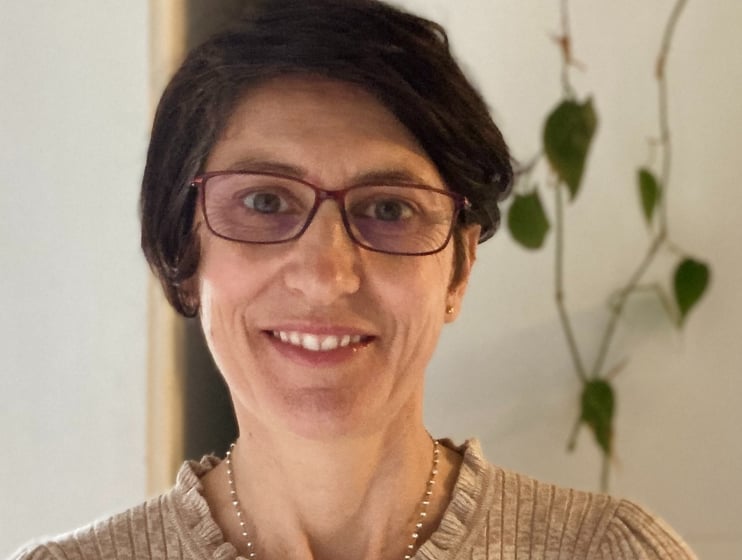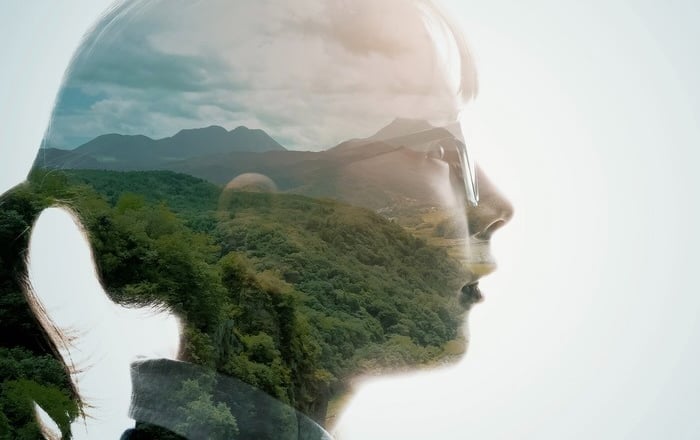Meet your practitioner
Monica Raphael
dip. Biodynamic Craniosacral Therapy
Monica Raphael earned her diploma in Biodynamic Craniosacral Therapy (BCST) in 2015. She is a member the Pacific Association of Craniosacral Therapists (PACT) and previously served on the PACT committee. She has assisted the Body Intelligence Training BCST diploma course as a Student Assistant for the six years.
Monica’s love of anything anatomy and physiology first drew her to work as an assistant to a chiropractor while still at high school, and then to study and practice remedial massage in her twenties. Soon after she began decades of Alexander Technique lessons from Jane Refshauge, and extended her love affair with the internal intricacies of movement, studying qigong intensively for 10 years under Li Yong Liang and Master Liu de Ming, as well as Chinese Medicine at Southern School of Natural Therapies. It was one of her Chinese Medicine university classmates who introduced Monica to BCST, and although she was thoroughly committed to studying oriental medicine, there was no unseeing or unknowing what had been revealed during those handful of BCST sessions. When Monica committed to the BCST training, she found the bodywork of best fit, as both a receiver and a practitioner! The ever deepening appreciation of living anatomy and embryology afforded by practicing BCST is the hook that keeps her captivated.


What is Biodynamic Craniosacral Therapy (BCST)?
Craniosacral Therapy is a gentle, non-invasive, hands-on therapy derived from osteopathy.
The Biodynamic approach engages the patterns of force from which you grew your own body from the time of your conception. These embryonic forces continue throughout your life to remodel (repair) your body structures and systems after each day of use. Naturally, one of the osteopath forefathers of BCST, Dr. Rollin Becker labelled these embryonic forces "Biodynamics" (bio: Greek for ‘life,’ and dynamics: Greek for ‘force’).
Flourishing Tides' practice of the Biodynamic approach includes three components during sessions: a sense of comfort and ease is the first component; a lasting experience of healing Biodynamics is the second component, and resourcing is the third component. I’ll describe these in more detail below.


Comfort and ease - finding safety
Coming to a sense of comfort and ease is the starting place of a BCST session. While some of life has you dissociate from your body, and although this is a wonderful self-preservation capability, there is a singular experience of comfort and ease when you feel safe enough to re-inhabit your body.
Cranio sessions begin with settling the nervous system. Monica practices using education, embodiment and a light touch. Developing grounding and embodiment skills are an integral part of each session, whether subtly interwoven, or explicitly explored.
From a down-regulated nervous system, you proceed in a way that's similar to falling asleep; the body's busyness quietens to stillness, before a single priority emerges. The difference between falling to asleep and a Craniosacral therapy session is you will still be awake after the stillness, which is normally the moment you drift off to sleep. Biodynamics proceed ...
Biodynamics
Biodynamics are sometimes experienced during sessions and beyond as a tide-like motion, felt both within particular body structures or by the whole body, so they are known by tidal names, such as 'Long Tide' and 'Midtide.' I would like to describe these ever-present embryonic motions more, but the best way to appreciate them is to experience them for yourself in you own body in one of our sessions!




Resourcing
Within a single session, clients can build body-awareness, self-soothing and self-healing skills, alongside the personal limitless resources that one client has aptly named, "body friends." These are the gold, useful in a myriad of ways, and found at the heart of the healing process. Healing is necessarily an enjoyable sensation.
Flourishing is within your skin.
What is BCST good for?
Who benefits from this therapy?
Biodynamics are endemic to every body created by them, and so Biodynamics are good for every body.
Many aspects of your awe-inspiring creation went very well, and so you are here. Many aspects were negotiated less than ideally. No problem. These can all be re-negotiated, re-done, enhanced, and cultivated for your long-term capacity to flourish in the body you have.
The first component of the Biodynamic approach, ease and safety is of particular benefit to those suffering trauma; any kind of trauma, since the trauma of living under duress, chronic illness, or isolated or cumulative events, all effect the body with the same trauma patterns. Trauma, it is well established, is not a disorder, rather it is an injury that heals. It is a moment of overwhelm, held in the body, waiting to be renegotiated by the body. Within a BCST session, trauma renegotiation happens without verbal articulation of the trauma, by your body at your body's pace, and most often, with Biodynamics' awe-inspiring gentleness.
BCST has its roots in working with the flow of cerebral spinal fluid (CSF) in the central nervous system. Commensurately, BCST is beneficially employed in the service of those suffering neurological disorders, commonly autism and head injuries, as well as support for CSF leak and vertigo.
Flourishing Tides regularly consults with those suffering anxiety-depression, gut and sleep problems, migraine and tinnitus. Monica is experienced in using BCST to support those undergoing chemotherapy and post-chemotherapy recovery.
Flourishing Tides has a special interest in supporting First Nations People, as well as new Australians.
If you would like to talk about how BCST may be beneficial to you, or simply to make an appointment, please be in touch via the contact form below, by phone, text message, or email me.


flourishingtides@protonmail.com
0417 794 097
© 2024. All rights reserved.
3 View Street, Pascoe Vale VIC 3044
Flourishing Tides practices from within the traditional lands of the Wurundjeri Woi-wurrung peoples of the Kulin Nation. We recognise their sovereignty has never been ceded. We express our awe and gratitude to the Wurundjeri for the necessarily sustainable and sensitive manner with which they have cared for these lands. We acknowledge and pay respect to Wurundjeri people, who have employed therapeutic knowledge and practices on these lands for longer than can be fathomed. How wonderful it would be to enjoy a history that can be looked back on in tens of thousands of years from now that sees Aboriginal and new Australian reconciliation, truth telling, healing, and long, respectful, shared, rich healing traditions.




